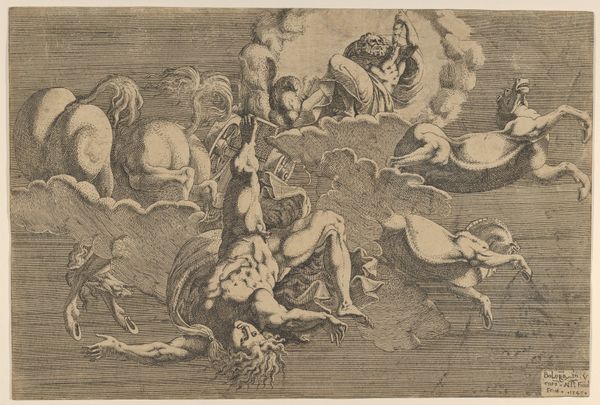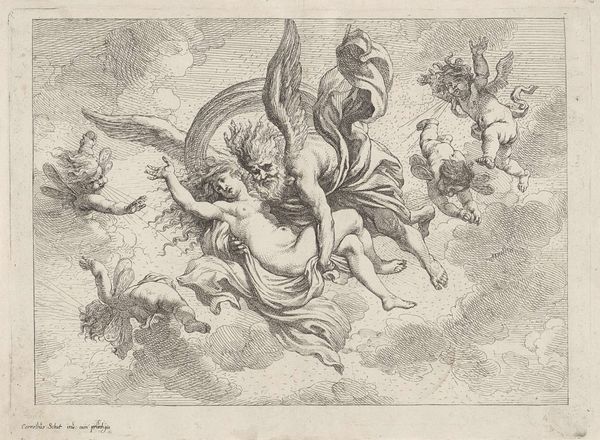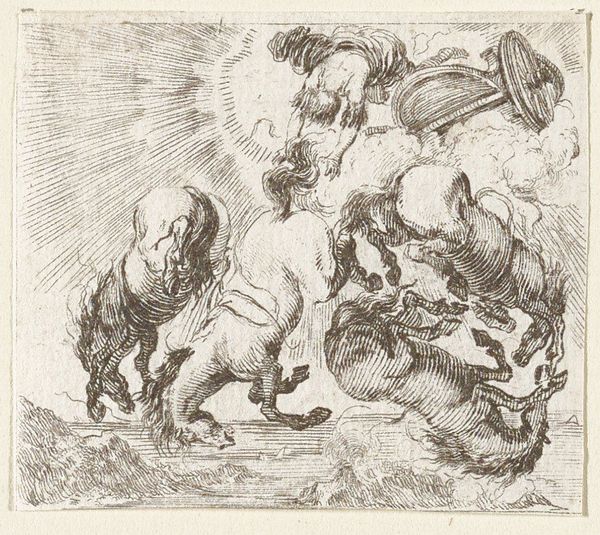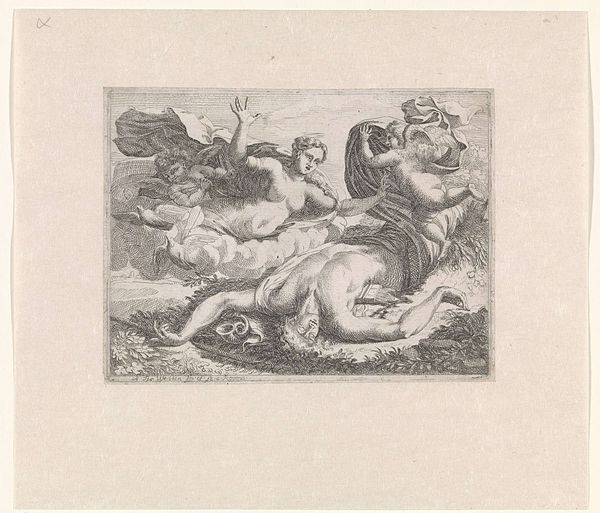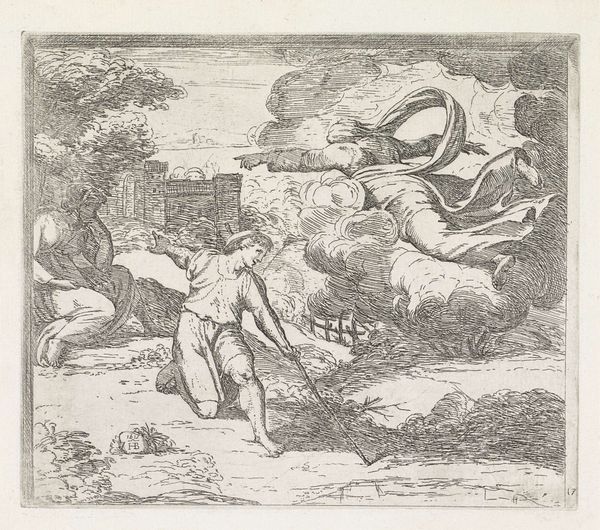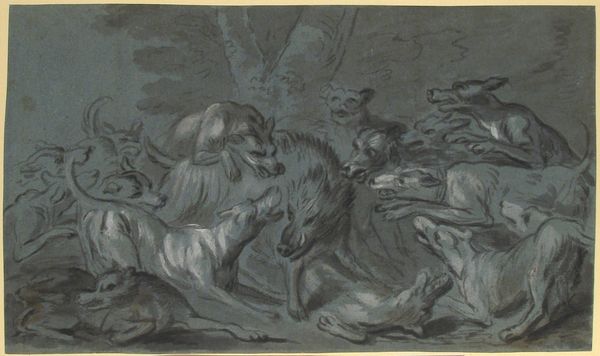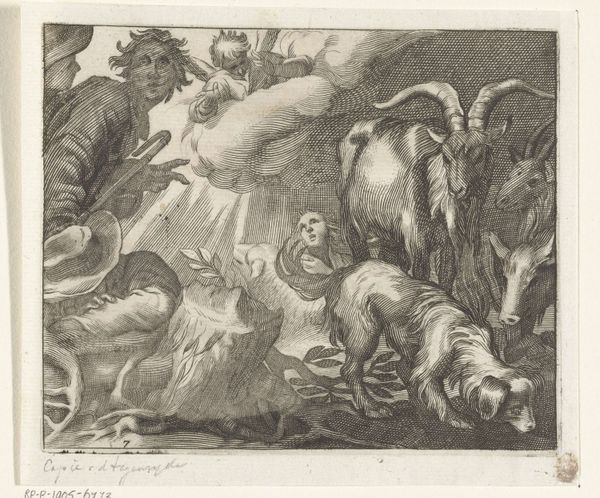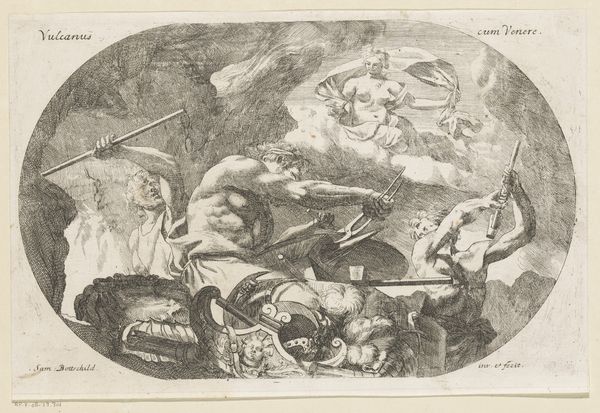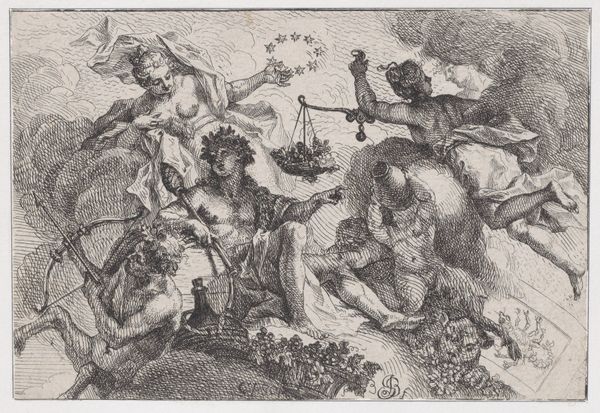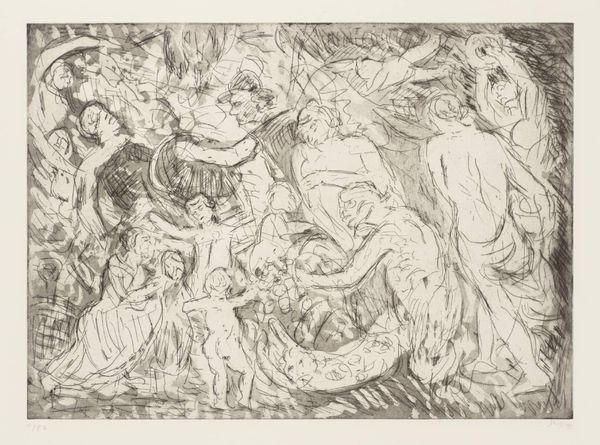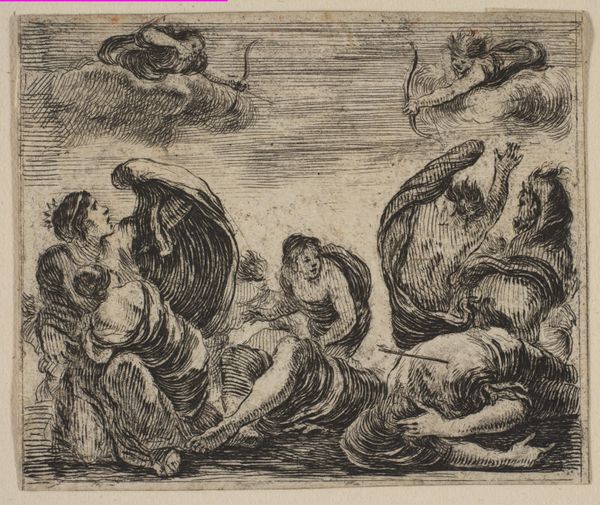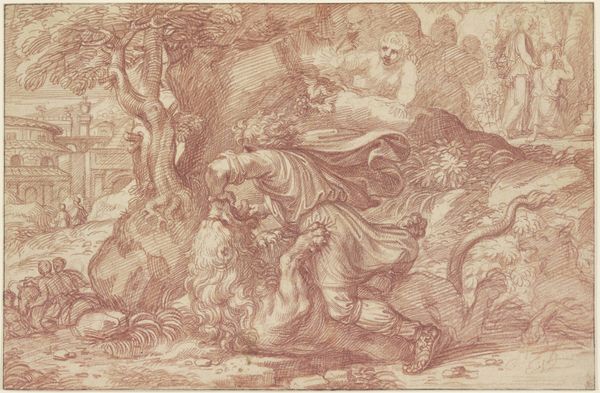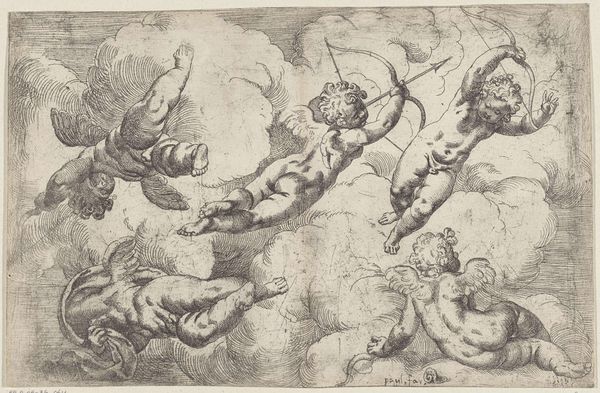
print, engraving
#
allegory
# print
#
landscape
#
mannerism
#
figuration
#
form
#
line
#
history-painting
#
italian-renaissance
#
engraving
Dimensions: height 293 mm, width 420 mm
Copyright: Rijks Museum: Open Domain
Antonio Fantuzzi created this print, 'The Fall of Phaeton,' sometime in the 1540s using etching. It depicts the classical myth in which Phaeton, son of the sun god Helios, attempts to drive his father's chariot across the sky, loses control, and plummets to his death. The story offered Renaissance artists like Fantuzzi a potent vehicle for exploring themes of ambition, hubris, and divine retribution. The print was made in France but Fantuzzi was working in the Italian style. The influence of artists like Michelangelo can be seen in the muscularity and dynamism of Phaeton's body as it tumbles from the sky. Consider how the institution of the print workshop enabled the wide circulation of such imagery, shaping artistic tastes and ideas across Europe. To understand this work more fully, we might research the role of classical mythology in Renaissance art, the patronage networks that supported printmaking, and the visual language used to convey moral messages. Ultimately, the meaning of this image is shaped by the social and institutional context in which it was created and consumed.
Comments
No comments
Be the first to comment and join the conversation on the ultimate creative platform.
